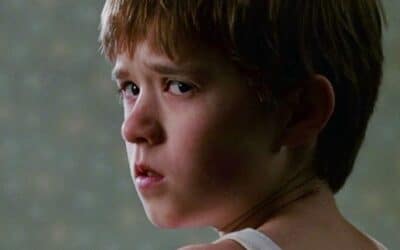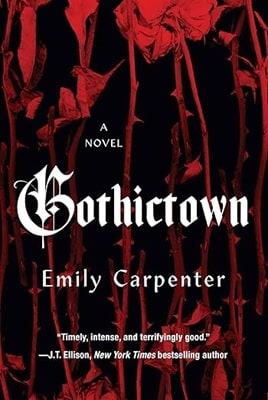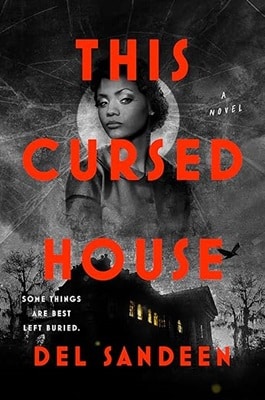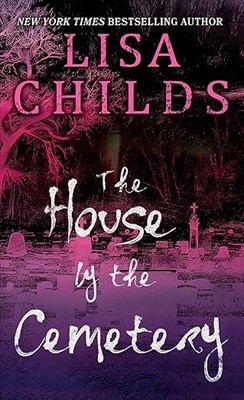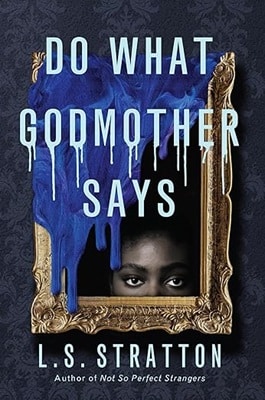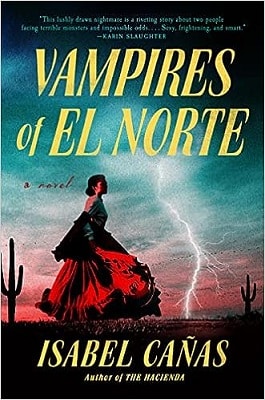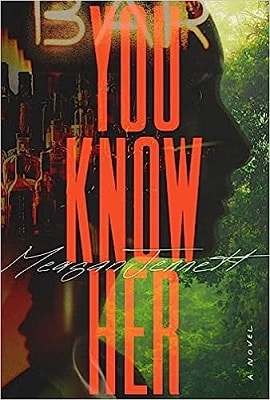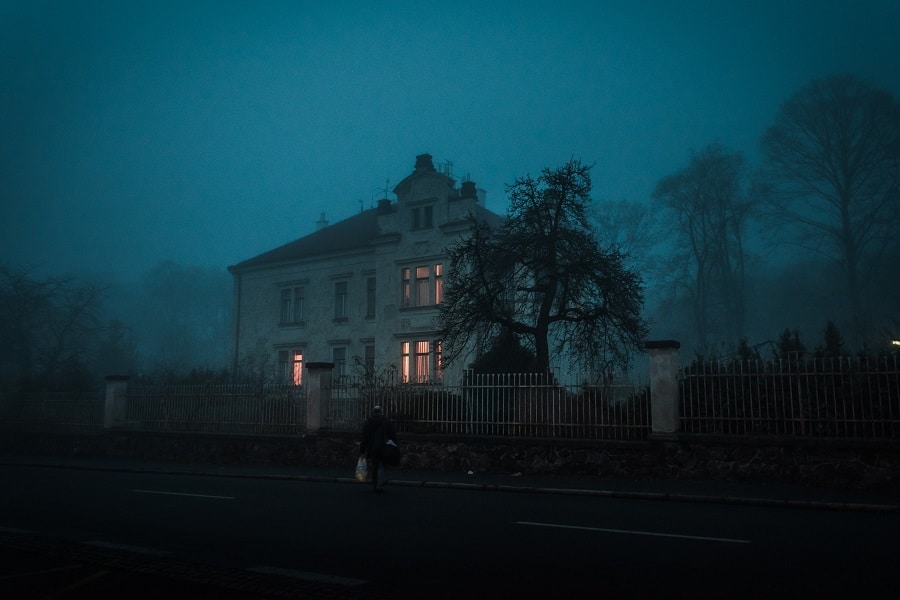
Blood Moon
by Rus Wornom
Stephen King’s Maine may perhaps be the most-well known region for literary haunts, strange doings, killer clowns, and the risen dead, but the American South is no stranger to homegrown horror. From the blood-soaked battlefields of Spotsylvania and Antietam, to the fevered imaginations of Faulkner, Howard and Burke, the Southern landscape in both real life and literature is populated by the shadow shapes of death—grotesque manifestations of the evils that men do, and the evils that dwell in our imaginations.
It is in the South where the European gothic tradition took root and blossomed in American soil. The haunted castles and overgrown, forgotten graveyards of England’s penny dreadfuls were replaced with decaying Antebellum mansions and tangles of ancient oaks, their wide branches draped with Spanish moss, dripping in the thick, moist haze. William Faulkner’s “A Rose for Emily,” a classic of understated terror and forbidden desires, epitomizes the dark secrets that fester within the Southern heart. Conan the Barbarian creator Robert E. Howard, a native of Texarkana, wrote two of the best Southern horror stories for Weird Tales, the seminal dark fantasy pulp magazine of the 1920s—“Black Canaan,” the haunting story of a backwoods conjure man, and “Pigeons from Hell,” an unforgettable and evocative tale nicely adapted for television on Boris Karloff’s “Thriller,” about two wanderers who spend the night in the manor house of an old, Louisiana plantation, deserted save for a flock of mysterious (and highly symbolic) pigeons. Manly Wade Wellman, a southern regionalist writer also published in Weird Tales and in many other pulps, wrote fondly of the h’ants and witch women of the Appalachians in his wondrous tales of Silver John, collected in Who Fears the Devil and Worse Things Waiting. Davis Grubb, with his collection, Twelve Tales of Suspense and the Supernatural, and the singular and powerful The Night of the Hunter, explored the horrors of both the unknown and the very real; his realization of a preacher, living on the border of heaven, hell and psychosis, is unforgettable. Karl Edward Wagner’s “Sticks” was a precursor to The Blair Witch Project, and his “The Fourth Seal” should be considered the epitome of conspiracy stories. Even the classic Universal monsters got in on the Southern craze after the popularity of Gone with the Wind. Son of Dracula (1942) and The Mummy’s Curse (1944) both took place near the swamps of Louisiana, and much of Abbott and Costello Meet Frankenstein (1948) took place in a castle on a Southern island—La Mirada, off the coast of Florida. Today, novelist James Lee Burke is exploring the violence and evil that men do—and the possibility that their conscious evil lasts long after death—in the latest thrillers of his introspective and lyrical Dave Robicheaux series, which take place in New Iberia, Louisiana.
With this rich, Gothic-infused heritage of horror, it is no surprise that the American South has become the ideal playground for the literary vampire. Scholar Lauren Fowler believes that “The vampire figure flourishes in the anxiety-ridden, liminality of Southern culture because it has the unique ability to both reflect and critique the elements of Southern identity.”
In folklore from around the world, each region, each culture, creates their own particular brand of nosferatu that reflects their own identities and fears . . . and their collective subconscious. The vampires of the literary South are no different—except, perhaps, in that they are sometimes more beautiful than fearful, and they usually reflect more of the South’s racial and social histories, including our quite diverse and sometimes deviant (and secret) sexual desires.
Our vampires are decidedly sensualized, deep fried and unsanctified.
It was a smell neither fecal nor ammoniac. It was the smell of the dead unburied, the corrupt smell of the unclean abattoir, of the charnel house.
- Leslie H. Whitten •
Most people, when they think of Washington D.C., don’t consider it a part of the South. But the District is located on the terminator of Virginia and Maryland, well below the Mason-Dixon Line, and has always borne its share of inherent, Southern racial tensions with its residents. Here, the motifs of the Southern Gothic are played out by very strange bedfellows.
Progeny of the Adder, written by reporter and D.C. insider Leslie H. Whitten in 1965, is a police procedural and a vampire tale that has distinct parallels with two later novels, which are two of the 20th Century’s most popular horror stories: The Exorcist and The Night Stalker. In Progeny, D.C. detective Harry Picard investigates a series of prostitute murders along the Potomac River, in the shadow of the Washington Monument. While the FBI and other Virginia and Maryland cops are sure this is the work of a sexual deviant targeting hookers, Picard takes note of the victims’ savaged throats and the loss of blood. He soon begins to believe that a vampire is among D.C.’s glitterati—or, at least, a serial murderer who is imitating a vampire.
With its jaded detective and its glimpses into D.C.’s sordid underbelly, Progeny of the Adder is a borderline noir novel. In addition, Picard could easily be substituted for William Peter Blatty’s Detective Kinderman in The Exorcist, and Whitten’s influence on Jeff Rice and his creation of Night Stalker reporter Carl Kolchak—and the undead Janos Skorzeny—is undeniable. I don’t believe it’s coincidental that The Exorcist takes place in a D.C. suburb, or that Kolchak is as determined an investigator as Picard, and just as cynical, who also comes to believe in the possibility of vampires.
Like a classic Southern Gothic, Progeny is laced with both racial tension and amorality, although both flow through the novel in undercurrents that only occasionally rise to the surface. Detective Picard knows that the District’s African-Americans distrust the police—and the slang epithets used conversationally are classic Southern “N” derivatives prevalent in Virginia in the ‘60s and ‘70s. It’s this racist, political, swampy milieu that Whitten’s killer feeds on—particularly in D.C.’s squalid strip club area—which can suggest to astute readers that D.C. itself is a soul-sucking vampire.
The racist parallel is also made obvious when the killer’s identity is discovered: Sebastien Paulier, British expat, had once been the overlord of a Malaysian rubber plantation who was known for the violent treatment of his workers. The similarity to the stereotypical Southern slaveowner is indisputable. Progeny of the Adder is perhaps a smarter novel than most readers think, and is arguably Whitten’s best work.
This was New Orleans, a magical and magnificent place to live. In which a vampire, richly dressed and gracefully walking through the pools of light of one gas lamp after another might attract no more notice in the evening than hundreds of other exotic creatures.
- Anne Rice •
Louisiana has become ground zero for vampirism in the United States, and it’s all because of the impact of Interview with the Vampire. It was a surprising blend of vampirism, historical fiction and eroticism that remains captivating today, that capped perhaps the most influential time period for vampire fiction and film, beginning with Dark Shadows, which ended on television in 1971, then The Night Stalker in 1972; Stephen King’s ‘Salem’s Lot was published in 1975, and Anne Rice’s vampire debut appeared in 1976. (We can arguably submit that this wellspring of vampirism actually began with Hammer’s Horror of Dracula in 1958; but, for our purposes, Dark Shadows is a fine place to begin this vintage and highly influential era.)
While the story seems, at first, overly simple—a vampire, Louis, is being interviewed, sharing the story of how he became one of the undead, and how he has survived for almost 200 years—Rice has more concerns here than mere storytelling. She touches on Louisiana’s history of plantations and slavery, while simultaneously portraying Louis’s newfound vampire family as dysfunctional as a typical human family. Through a mirror darkly she shows that vampire/human dynamics are extremely similar, where each individual must grapple with his or her own inner fears and longings. And, as in a true Southern Gothic, the dark deeds of the past reflect the dark possibilities of the future. As an 18th Century Louisiana plantation owner, Louis was metaphorically a vampire in real life, parasitically living of the toil and sweat of his slaves. Yet, as a vampire, he cannot conceive of that prior symbiotic relationship, instead believing steadfastly in his authority and power over others. The parallels are clear: white supremacy = vampiric supremacy.
It was Rice’s narrative tendencies in Interview, of historical context combined with horrific aspects and metaphysical and philosophical discussions, that distinguished this novel from any other vampire tale in 1976. The lush New Orleans setting, the antebellum period ambience, the grotesque bloodletting; the tragedy of Claudia, a seventy-year old vampire trapped in the body of a five-year old; Louis’ family tragedies and the death of his brother; the intermingling of blood and grief and despair, along with their all too human love and fears; and the characters’ profound moral ambiguity, signify Interview as a true Southern Gothic. That the character of New Orleans is so omnipresent here shows that Rice tapped into a subcurrent that is uniquely New Orleans—an undercurrent of both darkness and joy that permeates New Orleans and, by extension, all of Louisiana—and celebrates the people who dwell in a city on the edge of light and shadow, joy and despair, wealth and squalor.
The anguish of vampirism—undeath—in the Vampire Chronicles of Anne Rice, is an all too human affliction . . . of life.
You’ve reached Fantasia, where the undead live again every night. For bar hours, press one. To make a party reservation, press two. To talk to a live person or a dead vampire, press three. Or, if you were intending to leave a humorous prank message on our answering machine, know this: we will find you.
- Charlaine Harris •
Scholar Irene Sanz Alonso, in her paper “Why Do Vampires Prefer Louisiana?” claims that “…Louisiana, because of its exoticism and multiculturalism, makes them [vampires] feel alive again.” Interview with the Vampire may have brought New Orleans to the undead forefront, but the vampiric fascination with Louisiana was solidified when Charlaine Harris’ Southern Vampire Mysteries thirteen-book series was popularized on television as HBO’s True Blood.
Instead of the urban setting of New Orleans, Harris, a native of Tunica, Misissippi, placed her series of novels in the tiny, rural (and fictional) town of Bon Temps in northeastern Louisiana. Here, life is slow, and metropolitan New Orleans is considered a “Disneyland for vamps.”
Sookie Stackhouse, a waitress with psychic powers, and Bill Compton, a two hundred-year old vampire and Civil War veteran, are introduced in Dead Until Dark (2001), the first novel in the series. They fall in lust with each other in this horror-esque version of the cozy mystery, just a few years after a blood substitute has been created, and now vampires can come out of hiding, no longer having to prey upon mortals for sustenance. Now existing out in the open, vampires seek the same rights that American humans enjoy; but they are considered second-class citizens, and the parallels to the treatment of African Americans during Reconstruction—and even today—are painfully obvious.
Unlike Interview and Rice’s later books in The Vampire Chronicles, Harris’ series contains far less moral anguish and social commentary and instead concentrates on its nature as a Southern fried soap opera stirred together in a dark fantasy cocktail, complete with elves, demons, werewolves and other shapeshifters, and even fairies. This series reflects the steaminess of the Southern setting, where the region’s dense humidity and the moist, almost palpable heat are mirror representations of the characters’ steamy sex drives. Vampires, face it, are all about sex, and always have been—penetration, bodily fluids, sucking . . . you get it—but Harris brings their sensuality to the forefront with a sense of humor and a contemporary feminist edge.
While she cut her teeth on the works of Poe and the Nancy Drew novels, Harris uses gothic—and Southern Gothic—motifs mostly for titillation and entertainment in the Southern Vampire Mysteries, combined with many of the tropes of the paranormal romance genre.
“Everyone’s hungry for our children,” she said, and her voice cracked. “The whole world wants to gobble up colored children and no matter how many it takes it just licks its lips and wants more.”
- Grady Hendrix •
Charleston, South Carolina, the setting of Grady Hendrix’s earlier novel, My Best Friend’s Exorcism, is also the setting for his 2020 breakthrough novel, The Southern Book Club’s Guide to Slaying Vampires. Charleston, like Savannah, is regarded as one of the cities of the New South: cities whose hearts are filled with reverence for the South’s vaunted past, yet which embrace modernism with open arms. Anne Rivers Siddons’ The House Next Door is a superior haunted house story that is fueled by the collision of the old and the new in modern Atlanta; and that same sense of a past darkness seeping down the streets and circling the cul-de-sacs of Charleston is part of The Southern Book Club’s sinister, Southern Gothic charm—especially when a stranger moves into the neighborhood in the spring of 1993.
In the South, history lives with you and in you; and, like the undead, the past never really dies. There is no wooden stake big enough to drive through the heart of memory. In Hendrix’s 1993 Charleston, the past is hungry to come back and haunt the city’s residents. After Patricia, the protagonist, is attacked in an act of violence and minor cannibalism (Is there such a thing as minor cannibalism?), the ladies of her book club learn that her assailant’s nephew, James Harris, has been living with her in the neighborhood. Patricia, the most individual and iconoclastic member of the book club, befriends James at first, but gradually comes to believe that he is not who he says he is. No one else believes her, of course, in parallel to so many vampire novel plots, as in Night Stalker, Progeny, and King’s quintessential ‘Salem’s Lot—until it’s too late.
The ladies of this neighborhood book club are varied in personalities, but are still classically Southern whitebread: appearance is more important than reality, everyone must learn their station in life and act appropriately, everyone goes to church, and Class tells and bullshit smells. The ladies would never, ever say that out loud, of course, but believing it—living it—is part of their day to day lives. Southern Gothicism is alive and well in Hendrix’s Charleston.
Racism, also, is inherently part of Southern life, embodied here through class hierarchies, the haves and the have nots, and, most visually, by neighborhood boundaries. When young black children (from the wrong side of the tracks, the police infer) start disappearing and committing suicide, Patricia puts the puzzle pieces together, and when she tries to save a child from James Harris—quite obviously and viscerally, The Other—she is ostracized by her best friends and alienated from her family. Patricia is New South, and her Charleston neighborhood is decidedly Old South; her altruism and her disregard for the boundaries between white and black—and her inability to obviously distinguish a gentleman, Harris, from a common criminal—are her downfall. The primary African American character, Mrs. Greene, is the most noble character throughout the novel, proving through irony the many fallacies of racism.
As well as a vampire story and a serial killer story—like the subjects of the books the club reads—this novel is a ghost story in several senses. The past literally haunts the neighborhood, and the structure of the novel’s first half is like that of a classic ghost story: Is Patricia really witnessing these things, and there really is a vampire; or is she an unreliable narrator, and this is not a vampire tale, but a story of a con man and drug dealing . . . and Patricia’s descent into madness?
In the second half, we come to see that this evil in Charleston is not a human evil. Like ‘Salem’s Lot, this is a multi-layered novel of disintegration, of being preyed upon by a predatory antagonist whose existence cannot be accepted. Riches are lost, families wither, trusts are destroyed, blood is spilled, and over it all hangs an unearthly shadow, an alien thing, the outsider, that does not belong among Charleston’s McMansions and TCBYs and neat, tree-lined streets.
With its sly sense of humor and its cinematic plotting, The Southern Book Club’s Guide to Slaying Vampires is a Southern Gothic for the twenty-first century.
“We had never built, never created, only stolen your garments and lived in your cities and fed ourselves on your life, your vitality, your very blood—but we could create, given a chance, we had it within us to whisper stories of cities of our own. The red thirst has been a curse, has made my race and yours enemies, has robbed my people of all noble aspirations.”
- George R.R. Martin •
Defeat—depression and disillusionment at the utter downfall of a glorious cause—has permeated Southern literature since Lee’s surrender at Appomattox. It’s the dichotomy between grand achievement and dismal failure that is at the heart of Fevre Dream, the masterful 1982 novel by Game of Thrones’ George R.R. Martin—arguably his finest work forty years later, and considered by some to be “a new modern classic.”
In an interview with Northwestern University, Martin says that his fiction combines the “wonder and imagination of the fantasy novel with the kind of hard-edge realism that characterizes the best historical fiction.” No other novel better exemplifies Martin’s writing philosophy than Fevre Dream. Here Martin combines historical fiction with realism, along with a dollop of imaginative evolutionary science.
In the Antebellum South of 1857, Abner Marsh, steamboat captain and owner of the Fevre River Packet Company, partners with mysterious and very rich Joshua York to build the steamboat of Marsh’s dreams . . . the Fevre Dream. Pale and nocturnal Joshua York also has a dream: to cure his race’s lust for human blood, and to make a home for them sailing aboard the Fevre Dream. York, as Marsh discovers later on, is what we term a vampire, but in Martin’s cosmology is instead one of a race of blood-drinking predators whose evolution paralleled our own.
An Other.
Save for York, the vampires here are quite smug and narcissistic, and stand as a racial metaphor identical to that of Interview with the Vampire: vampire superiority = white supremacy. This, again, is another dark mirror to slavery in the South. It is also fascinating that Martin’s vampire race, while obviously superior predators than humans, also achieve very little as a people. York rightfully believes that their need for blood has turned them into a race of parasites without ambition to change or to grow. His goal, to create a blood substitute, could be the key to his race’s evolution. His enemies—just like abusive slaveholders—think quite differently: “We are the masters. Masters do not labor. Let them make the suits. We shall wear them. Let them build the steamboats. We shall ride upon them. Let them dream of life eternal. We shall live it, and drink of their lives, and savor the blood. We are the lords of this earth, and that is our heritage.”
Protagonist Abner Marsh represents the best possible Southerner of the time, flaws and all—reasonable, responsible, and all too human. Joshua York is our anti-hero, very much a Barnabas Collins-type vampire who yearns for an almost human existence. Both are obsessed with their individual dreams: one of sailing the finest steamboat on the Mississippi, the other of forging a peaceful coexistence with humankind. Their obsessions, like all obsessions in Southern Gothicism, drive them impulsively, and are most likely doomed to fail.
There is a third primary character here which should not be underestimated. As in Star Trek, where the Starship Enterprise became a character in her own right, the Fevre Dream herself is the novel’s proudest, most vibrant character, representing an ideal of elegant life and strength and heroism. York even quotes Byron when appraising the steamship: She walks in beauty, like the night. As a symbol, the Fevre Dream represents Abner’s dreams, York’s hopes, and, in a larger sense, the grand reach and achievement of mankind—and what happens to her later in the novel is not only the true horror of the novel, but it also represents the decay of the South’s morals, and the horrors of the Civil War itself.
Fevre Dream is a haunting and unforgettable novel of understated impact and intrinsically Southern evil.
From the h’ants of Appalachia to the Skunk Ape of Florida, the South has always been teeming with terrors. The vampire is a relative newcomer to the Southern literary landscape, but the Library of Vampires has some blank spots on its bookcases. Like the Ghost Host says in Disneyland’s New Orleans-style Haunted Mansion . . . “There’s always room for one more . . .”
About the Author
Rus Wornom is a Southerner who loves to gaze at the soft haze between the trees on lazy summer days in Virginia while his pups play around him. His new novel, Ghostflowers, is a supernatural Southern gothic with a 1971 classic rock background. “The whole story sprang to life one morning while I was getting ready for work, when my wife gave me a crazy, awful idea for a novel—and it took me over. Within minutes I knew the characters’ names, I knew almost everything that would happen, and I knew that the main characters would not, could not, live happily ever after. One had to die.”
Wornom’s 1996 novella, “Puppy Love Land,” was nominated for an award from the Horror Writers Association in 1997 (preliminary ballot). He graduated from Old Dominion University with a B.A. in Art, and attended the University of Miami Graduate School for Creative Writing. He lives in central Virginia with his long-suffering yet devoted wife and spoiled pets, and was born and raised in Hampton, VA.

Similar Features
Is It Suspense?
How you know a suspense story for what it is
Unreliable Narrators in Suspense
The most enthralling mysteries are those that lie within us
Suspense Themes
What are some of the common themes of suspense?



